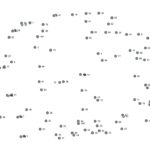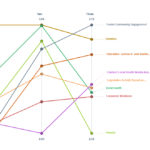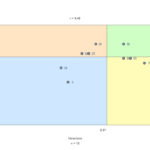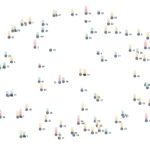Group Concept Mapping
- Seeks and values the voices of stakeholders and applies rigorous analytics to opinions, beliefs, and values. It combines qualitative data collection approaches with quantitative analysis processes and tools.
- Is a reliable method for participatory research. Its mixed-methods tools and approaches help researchers and organizations articulate issues, solve problems, and develop results that support measurable progress.
- Is a structured yet flexible method that captures and organizes the ideas of a group on any topic of interest and represents those ideas visually in a series of interrelated maps. The results reflect stakeholders’ perceptions and values, and support the researcher’s priorities with results that are immediately usable.
- Is now available in Spanish.
The GCM Method
GCM is a structured engagement, data collection, and analysis process used to surface issues, support discovery, and focus on measurable change. It consists of these six steps:
In this step, you define what the focus of the project will be. What problems do you have to solve as a group? What do you need to learn from the group members?
Think about who should be included in your group, to give you the best and most diverse thinking on the topic. Create a schedule for the project, and a strategy for involving stakeholders in the process.
Once you know the focus of the project, ask participants to brainstorm ideas in response to that “focus prompt.” Brainstorming can take place in the traditional way, with the group in one room.
Or people can generate ideas individually and submit them anonymously. With groupwisdom™, the brainstorming website is updated in real time, so participants can see the ideas that have already been generated.
Give the final list of ideas back to participants and ask them to complete two activities: sorting and rating.
First, participants sort the ideas into categories that make sense to them. Participants may create as many categories as they like, taking care to put each idea into one category only. Ask them to create their categories based on concepts, so ideas are sorted by how similar they are in meaning to each other, not by how the ideas are valued in importance.
Next, participants rate the ideas on how relatively important they are, or on any other scale which you will carefully define. Rating the ideas is a separate and equally important part of the structuring step.
In this step, groupwisdom™ aggregates participants’ structuring work to create the concept map. groupwisdom™ uses statistical techniques like multi-dimensional scaling, which locates each idea as a separate point on the map. Statements that are closer to each other on this map have generally been grouped together more frequently by the participants.
Another statistical technique, hierarchical cluster analysis, shows you where it makes sense to draw boundaries around groups of ideas, to make them into conceptual “clusters” or themes. Finally, you average the ratings for each idea, and each cluster of ideas.
The GCM process is facilitated by technology, but not dictated by it. An important part of the process is sitting down to look at the concept maps with your team. Here are some of the reports to examine:

Point Map
Look at where each idea “point” fell on the map, which shows how the group thinks these ideas are related to one another.

Pattern Matches
These reports compare the ratings of the clusters based on different criteria, such as different stakeholder groups, rating variables, or points in time.

Cluster Map
This map shows where the boundaries are drawn around the points to create thematic clusters.

Go-Zones
These reports compare the ratings of the individual ideas within a cluster, using the same criteria as Pattern Matches use.

Rating Maps
These maps overlay the rating data onto the map to show us, for example, which ideas or clusters of ideas the participants thought were most important.
In this step, think about ways to use the maps and reports. For example, you might want to use the reports for your publication, use the maps as a framework for your strategic plan or evaluation design, or to use the ratings to track progress over time.
GCM Publication Database
Researchers complete hundreds of Group Concept Mapping studies each year using the groupwisdom™ and Global MAX™ platforms. Many articles about those studies are published in peer-reviewed journals and other reputable publications. Concept Systems releases a monthly Publication Spotlight newsletter to highlight representative Group Concept Mapping (GCM) publications. This GCM Publication Database includes publications from the Spotlight that were published since 2012 as well as previous publications that are foundational to the Group Concept Mapping methodology. The publications include studies that utilized either The Concept System® Global MAX™ or groupwisdom™ web-based data collection and analysis platforms.
To receive the Publication Spotlight, contact Concept Systems using the form below the Database. New to GCM? Join our free introductory webinar.
Contact us
Let’s connect! Fill out the form below or call us at (607) 272-1206.
* These fields are required.


